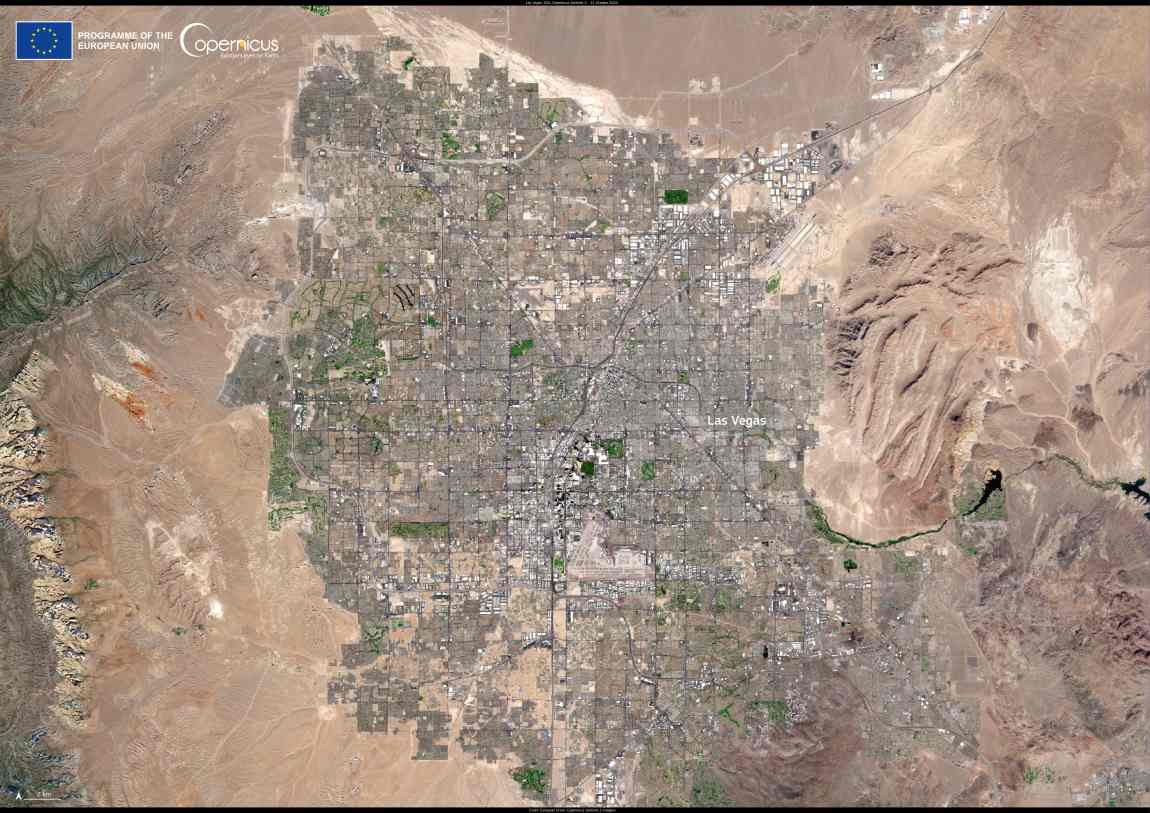Las Vegas, USA, has emerged as a leader in sustainability thanks to policies promoting renewable energy, water conservation, recycling, and green buildings. Water consumption in the city has decreased significantly despite a large growth in population, and by 2030, half of electricity in the state of Nevada is expected to come from renewable resources.
Las Vegas’s commercial sector, which is responsible for one-third of the city’s total energy consumption, is increasingly integrating solar power and natural daylight to improve its energy efficiency.

This image, acquired by one of the Copernicus Sentinel-2 satellites on 21 October 2024, shows Las Vegas from above.
The Copernicus services provide essential information for the energy sector, such as the Copernicus Atmosphere Monitoring Service’s (CAMS) data on solar radiation, which supports the planning and implementation of solar farms, rooftop solar panels, and more.
Featured image credit: European Union, Copernicus Sentinel-2 imagery




